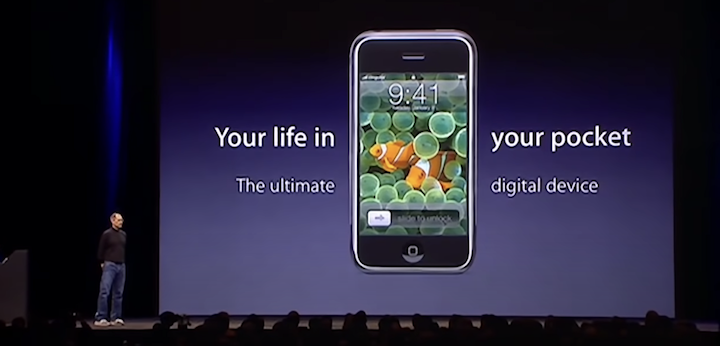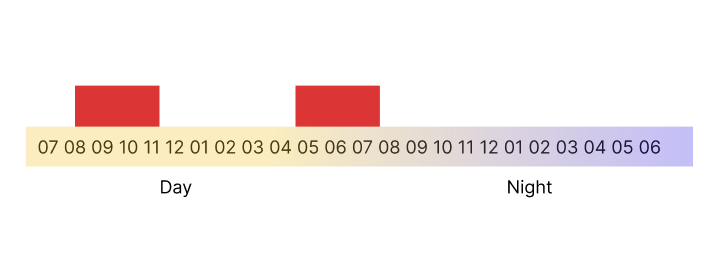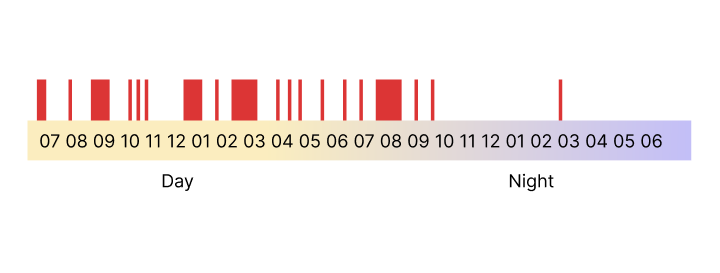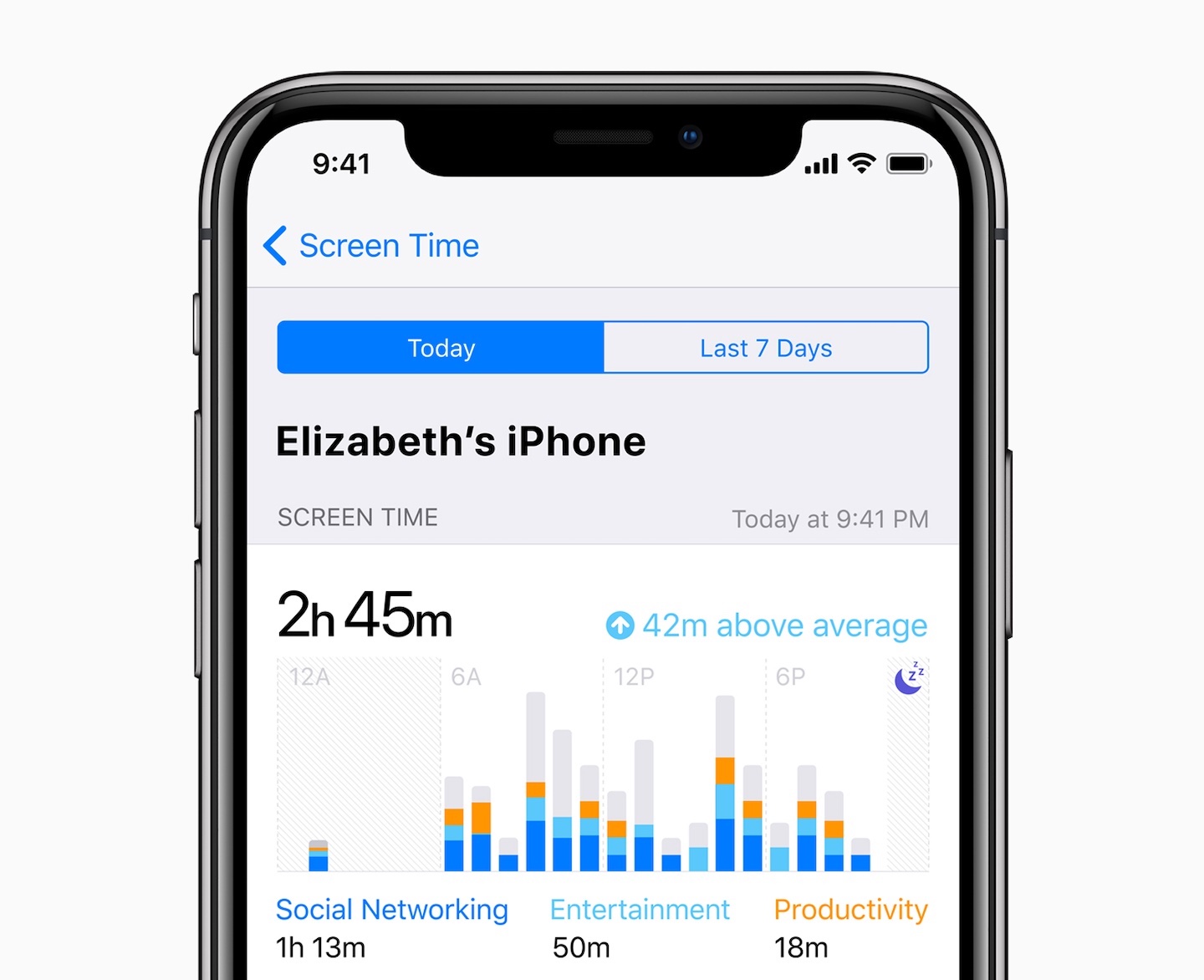We’re losing our capacity to focus.
When Apple introduced the iPhone in 2007, little we knew how much that would change the world, it was the first step towards the ubiquity of smartphones. There was a premonitory phrase from Steve Jobs: “iPhone is like having your life in your pocket”.[1]

And we loved it.
We’ve embraced smartphones to the point where it’s hard to find someone who doesn’t own one, but we have yet to consider the consequences. Steve Jobs was right, more and more of our lives are on our phones instead of outside them.
How can we no longer read a book for more than 10 minutes or play with our kids for an hour without getting distracted? How are we so used to receiving dozens of notifications each day?
A formed habit
We check our phones before going to sleep, when we wake up, when walking, or even talking to people in real life. Checking our phones is an escape from reality, a quick way out of boredom, sadness, or dissatisfaction, but this habit has two main effects on our lives.
First, we fragment our days into periods between checking the phone. We might expect that if we use the phone for a few hours daily, it’s just a chunk or two, but it doesn’t work like that.
How we picture mobile usage time:

How mobile usage looks in reality:

Second, we’re overflowing our brains with too much information. We see new messages, likes, videos, or frightening news each time we look at our phones, and that adds up, leaving little space to think more deeply about other important things or even sleep properly at night.
The odds are against us, but there’s a way out.
We can still reclaim what was once ours: our mental space, our mental health, without constant interruptions and distractions.
A plan to get our attention back
1. Let’s accept where we are
Like with any other habit, we must first recognize how ingrained smartphones are in our lives.
I encourage you to take a look at Screen Time on your iPhone or Digital Wellbeing on Android. It’ll be eye-opening if you’ve never done it.

It’s hard to find accurate data on the average usage time per day but according to some resources[2], it’s around three hours.
If we spend two hours per day looking at our phone, it’s like spending one month looking at a screen after one year. Four hours a day? That’s about two months each year it passes.
2. Uninstall almost all the apps
Once we accept the situation, the next step is to re-frame our relationship with our phones. They’re a tool and an addictive distraction, so the apps we don’t use for work or something completely critical should be gone.
Trying to limit the time we use these apps is not enough because it’s easy to go over time; I think removing them for good is better.
The browser like Safari or Chrome is also dangerous because it’s essentially an infinite scrolling pit, but it’s more tricky to remove and sometimes useful, so let’s leave it for now.
We should also leave our phones at home more often. I know it’s scary to go out without our phone, but let’s take a short walk without it one day, even if it’s just for 10 or 15 minutes.
Now, with less addictive apps and occasionally leaving the phone at home, we can stay in this phase for a week. If we want to gamify this, let’s track our progress daily with Screen Time or Digital Wellbeing on Android.
After feeling more disconnected, we can go to the next stage, where the real change will happen.
3. Using a dumbphone
Smartphones are designed to give us many apps to get and retain our attention. Their algorithms don’t care how much time and mental energy you waste there. They want more money by showing you more and more ads. They’re soulless.
In contrast, dumbphones are minimal phones. Like an old Nokia, you can only call and send a message; some might have basic tools like a calculator or a crappy camera.
We could remove even more things from our current phone and make it “dumb” but that entails some tricky settings and the temptation will always be a couple of taps away, so it’s better to just get a dumbphone.
I’m preparing an entire article on dumbphones, but for now, we just need to know there are some fancy (and expensive) dumbphones like the Light Phone or the Punkt MP02, but we don’t need to spend $300+ to get our life back.
Go with something basic like the Nokia 225 4G for $45, or even an old phone would do it for now. If you want to explore more options, this tool is a great resource.

4. Find creative alternatives for the tools we’re missing
We may need some of the tools we used to have in our phones, and we can probably start to consider that it’ll be ok if we get our shiny smartphones back, but that’s not a good idea because it’ll be very easy to go back to square one. Instead, let’s be creative and find alternatives for them.
Living without a smartphone is a lifestyle change; some things we used to do with them won’t be possible anymore, and others will be less convenient. We’re talking about valuable things like paying in a store or getting a notification of an upcoming event, but we can find alternatives for each.
We can call our friends from time to time instead of messaging them, or getting a physical notebook instead of an app.
It might take longer to do the same things without smartphones, but remember where we come from. Remember, we used to ignore our loved ones to check our email for the 20th time more often than we’d like to accept.
5. Take some time to adapt to your new phone
Living without our smartphones will be challenging at first, almost like a mourning phase. It’s scary not to have a constant accessible distraction source all the time, but in return, we’ll get our life back.
When some days pass by, you’ll start to see the benefits. From my experience:
- Your capacity to focus will improve. You can maintain conversations listen to the other person, and read for an hour or even more some days.
- You’ll notice a big improvement at work too. You’ll be able to work on one task for longer periods of time.
- You’ll start to feel calmer. I began to think less about work because I wasn’t checking Slack at 8:00 PM while bathing my kids or preparing dinner.
- You’ll have more time to do things, around two or more hours each day! I can write more now because I no longer waste two hours on the phone.
Conclusion
I’d encourage you to try these steps. What’s at stake is our mental health, our time, our life. It might be hard at first, but the reward is worth it.
References
[1] Steve Jobs, in the 2007 Keynote introducing the original iPhone full transcription.
[2] BankMyCell Report.